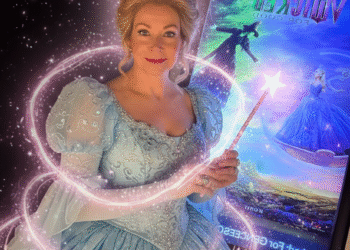
Plus: A reality show approach to manufacturing; a very mayo-y wedding.
The New York Times has released a lengthy investigation into how Uber has addressed – or failed to address – sexual assault during rideshares. The entire piece is an in-depth look at a wrenching problem. But it also offers a rare glimpse into how Uber made decisions to message its actions surrounding these assaults.
These insights come from court documents related to ongoing litigation, review of internal documents and interviews with current and former employees. They paint a picture of a company publicly reassuring women that driving and riding with Uber was safe – even as it declined to release data that showed the extent of the problem or to fully roll out features that it believed could reduce assaults.
Even as Uber worked to roll out new safety features, it was inundated with media coverage of sexual assault incidents. The company deployed a plan to push a “steady drumbeat of safety messages” to drown out some of those stories, according to a 2018 email sent by a marketing manager.
Privately, some employees discussed misgivings over not being fully transparent about its sexual assault problem and even working to undermine the credibility of survivors in the news media, according to internal communications.
One spokesperson wrote in an internal message at the time that he had “trashed” a victim to USA Today. “I used to look after my soul, but I don’t know where it is anymore,” he wrote. When contacted by the Times recently, the spokesperson said he “deeply (regretted)” the comments.
The report also revealed an internal schism over the content of a safety report that some felt downplayed the reality of the situation. Uber released data on only five of 21 categories of sexual assault and harassment, which it deemed the most severe and least subjective. But that choice led to disagreements within the company – the then-head of women’s safety at Uber refused to participate in interviews about the report out of protest, according to internal communications. Uber also declined to release information about when assaults were most likely to occur.
Hannah Nilles, Uber’s head of safety for the Americas, said in a statement to the Times that they withheld the information because they “did not want to deter people from choosing ride-sharing and unwittingly encourage them to ‘drive drunk, walk unsafely or be stranded.’”
Why it matters: This is a story that shows the difficult positions public relations professionals can find themselves in. We see multiple employees showing disagreement or even outright anguish over what they were being asked to do. It also serves as a reminder that any communication you make in the course of your work can potentially be used in a court of law – and then show up on the pages of the New York Times.
It is not our place to judge the morality of the decisions communicators made, only to urge a moment to consider your owncode of ethics, as well as that of professional organizations like the PRSA. As a practitioner, you’re obligated to vigorously represent your client or employer. It’s clear Uber’s team clearly did that, working to counter bad press with safety messages. But a balance can be struck between discussing the seriousness of the problem with reassurance of safety.
That’s what Nilles tried to do in her statements to the Times, which appear to be extensive and are woven throughout the piece. Some, like her statements that “There is no ‘tolerable’ level of sexual assault,” are strong. Others, like her comments on why the company declined to release certain information, may ring more hollow, especially to a survivor who may have used that information to weigh the safety and risks of taking an Uber or not.
These are difficult decisions that require serious consideration of duty to the public versus duty to client. Know who you are and where you stand.
Editor’s Top Reads:
- A YouTube reality series is taking a “Top Chef” approach to the decidedly less sexy field of industrial machinery. “Clash of the Trades” is a production from Project MFG, which has support from both industry and the U.S. military, and pits machinists from 60 high schools and trade schools together to see who can produce custom parts with speed and precision. The slickly produced show looks similar to any other competition reality program, with confessionals, a $100,000 prize, and tense teams saying things like, “we’re cooking with gas now!” The Times reports that while some episodes have less than 1,000 views, the impact of the program has been huge. Schools that before struggled to fill their programs now have waitlists. Other finalists have been able to build new facilities. This creative approach shows that you can have fun with even the driest topic. Adopting a popular, entertaining format is helping employers train the workforces they need. How else can you flip the script on traditionally “boring” topics to become something that people want to watch and engage with?
- Hellmann’s Mayonnaise paid for a couple’s wedding, complete with officiant dressed as a giant tub of the condiment. In return, they got footage of the quirky party and a Wall Street Journal writeup from a friend of the couple, who just happened to work for the paper. The winning couple, who bonded over their love of sauce on their first date, were selected from 37 others. Their wedding came decked out with brand colors. One guest even carried a purse made from a (mercifully emptied and cleaned) Hellmann’s jar. Mass-market brands seem to see sponsoring weddings as a way to reach everyday Americans who still believe in love but are pinched by rising costs. Making them over-the-top and silly like Hellmann’s did can help attract attention, even if it can’t quite make mayo romantic.
- In other PR stunt news, IHOP released a zeitgeisty $130 Luxe Dubai Chocolate Pancakes. The ridiculous product features buttermilk pancakes with crunchy kaitifi, pistachio cream, Nutella, a whole Dubai chocolate bar, pistachios, edible gold leaf, gold glitter and Madagascar vanilla bean whipped cream. Of course, no one is expected to really buy this. Three stores gave out freebies to guests, while most IHOPs will offer a scaled-down version for $13, minus the chocolate bar and the gold, of course. The over-the-top stunt works by contrasting a brand known for its affordability with the Instagramy Dubai chocolate at an eye-watering price point. And it worked: They got coverage in Food & Wine, “Today” and People, among tons of social media buzz.
Allison Carter is editorial director of PR Daily and Ragan.com. Follow her on LinkedIn.
The post The Scoop: PR staff at Uber expressed regret, ethical concerns over assault responses appeared first on PR Daily.














